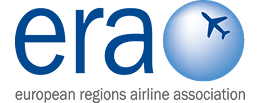Air traffic control (ATC) delays are on again on the rise, threatening regional connectivity and airline reliability. With delays in 2024 the worst in over two decades, the delays absorbed by ERA airlines since the start of the summer schedules are now at crisis levels.
As Europe enters another record-breaking summer for air travel, the strain the air traffic control (ATC) system is reaching critical condition.
Air traffic is growing at over 5 per cent annually, with up to 36,000 flights expected daily in Summer 2025. Yet, the infrastructure needed to manage this growth is buckling under pressure.
With even more flights and passengers expected this year, delays are forecast to worsen, impacting millions of travellers and placing regional airlines in an increasingly difficult position.
The consequence for ERA member airlines is sobering. Although overall traffic demand is approximate the same as last year (down 0.5 per cent), since the start of the 2025 Summer season on 30 March, ERA airlines have seen total ATC delays increase by over 15 per cent, with en-route delays up over 25 per cent compared to the same period last year.
The root of the problem lies in a combination of factors:
- ATC systems in many countries are at or near capacity, unable to absorb additional traffic or respond flexibly to disruptions like weather, military activity or industrial action.
- Seven EU Member States are responsible for 80 per cent of delays, but rerouting traffic requires co-operation and capacity across the entire network, with additional fuel burn and CO2 emissions impacts.
- Recruitment and training of air traffic controllers is lagging, with shortages expected to persist unless immediate action is taken.
- Airspace design remains outdated, especially in central Europe where traffic is at its highest and most complex.
- Technological upgrades and automation, as outlined in the ATM Master Plan, are essential but require political will and cross-border co-ordination.
The European Commission and EUROCONTROL are working closely with national authorities, but without national level investment and commitment, the situation will deteriorate further. By 2035, 80 per cent of ATC units in Europe could reach saturation, leading to delays up to six times worse than today.
For regional aviation, where aircraft often operate 10 or more flights per day, predictable and efficient ATC services are paramount to ensure schedule resilience. Mounting ATC delays erode passenger confidence, increase costs, and jeopardise the connectivity that underpins regional economies.
On 5 June, the Transport Council of the EU met where the subject was discussed, with the Commission providing further information to Member States and focussing on three main recommendations
- Accelerate recruitment and training of air traffic controllers.
- Redesign European airspace for greater efficiency and flexibility.
- Invest in automation and AI to future-proof the system.
ERA urges that governments, service providers, and EU institutions act decisively to ensure the European ATM system is robust, efficient and fit for purpose both now and in the future.
Members can access the Council note on European Air Traffic Growth: Capacity Challenges and Solutions here.
